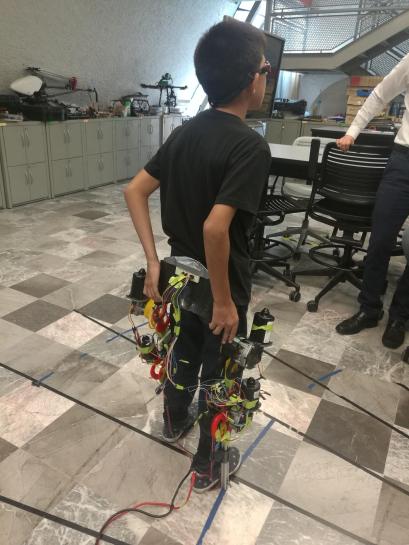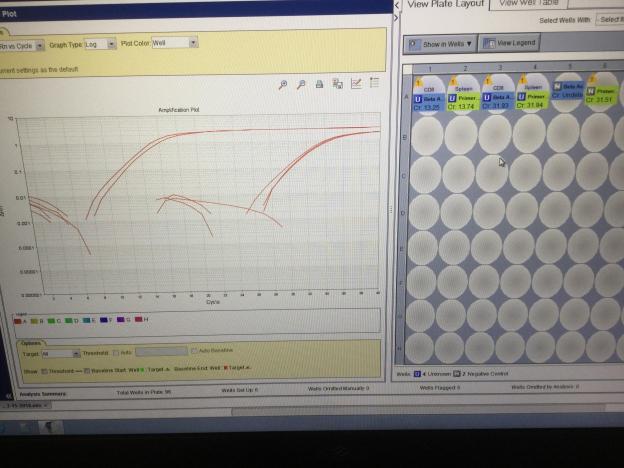Month: May 2018
Partnership: The best way to research
by Max R., Junior
Minnetonka Research 2 Student
Many teachers condemn the allowance of students to choose their own working partners – they believe it will cause pairings of chatty friend with chatty friend – and therefore no work will get done. In science research, however, this is not the case. Chatty though friends may be, in research it is extremely helpful to have a partner you know well and know you work well with – it allows you to get much more work done than either of you could have yourself.
Let’s take myself as an example. Last year, I didn’t have a partner. Sure, it was fun. I mean, I had no one to answer to, not really. I had nearly full control over what i did, how i did it, and when. It felt great. But at the same time, how much was I actually accomplishing. Not being accountable to anyone let me push things off and tell myself i’d do it later, things we’ve all done and hate to admit it. Also, it may have been fun in the sense of lack of responsibility but having no partner made it less fun too – I had no one with whom I could interact personally, consistently through the year. This contributed to an isolated, cut-off feeling, and as i mentioned before, fostered unproductivity and lack of focus.
Now this year, I found myself a partner. The story is kind of funny, actually. Everyone came in to the class on the first day, and shared out their current vision for their project. It was a smattering – some people looking to do intense biomedical research on prominent modern diseases, some engineering projects looking to find new uses of current technologies such as drones. My idea was to build a robotic exoskeleton to augment one’s body and possibly compensate for otherwise life-altering injuries.

No, not that kind of exoskeleton. As cool as that would be for a high schooler to build that would be way outside of the scope of a year-long class, its budget, and even modern technology, as mind-bogglingly advanced as it is. I was thinking more along the lines of something which could be available to nearly anyone, particularly those who can’t afford what modern technology we do have currently in this field.

ALICE – a low-cost, open-source exoskeleton being developed by a Mexican team aimed at easy DIY construction and low cost for wide availability
Turns out my soon-to-be partner had nearly the same exact idea: a robotic exoskeleton for one’s hand to counteract effects of diseases or injuries like strokes, which are increasing in prominence. He was my friend, too – I knew him already from the robotics team, and as you can expect we almost instantly teamed up.
The benefits of this partnership were significant and blatantly obvious from even the first few weeks. We made quick work over the proposal phase, which last year had beleaguered me for weeks. We got the go-ahead and began 3d-printing small prototype parts before most people had even turned in their first draft.
In addition to significantly increased work efficiency, having a partner gave a much better atmosphere to the whole work experience. I had someone to whom i was accountable, but it didn’t feel like an infringement on freedoms, only a natural sharing of responsibilities. It also gave me someone with whom I could interact, talk with about random things, and have fun with. Overall this year with a partner has been tremendously better than last year without one.

As for our project, the image above represents what we have so far. We’ve had several hiccups this year but of course that is to be expected and we’ve been prepared to deal with them efficiently and intelligently. Our design is looking extremely good and once we get all the components in place it may well be our first functional model. We’ve already made easily twice as much progress as I made all of last year alone – this is almost entirely due to our partnership. Without it I’d be in the same situation as last year – barely on schedule, hardly on task, and making little progress. Finding a great partner with the same interests as me and who was already my friend to begin with has been the best thing to happen to me in research so far.
The Tea on T Cells
by Jenna R. , Senior

qPCR from a Trial Run
Throughout research we have practiced many ways to introduce our topic as simplistically as possible. These assignments consisted of short speeches, usually with a strict vocabulary or word count limit. I’ve struggled to explain my project with the depth that I’d like, not because I don’t understand it, but because there is a lot of background information.
Much of this is due to the fact that my project is rooted in immunology. The study of the immune system isn’t something that is typically taught to students or adults. I thought I would take this opportunity to explain my project in as much detail as possible to present the most in depth picture.
Essentially, my project investigates a subset of a subset of T cells. T cells are really important immune cells. A lot of the focus in immunology is on B cells and antibodies.
T cells don’t produce antibodies, but they have significantly more diversity in what they do. Helper T cells kick-start B cells. Suppressor Ts suppress the immune response after an infection is over. Memory T cells ‘remember’ the pathogen to which they were activated so that when they encounter it again they stop it quicker. CD8+ T cells (the type I am working with) are able to kill infected body cells.
CD8+ T cells work by responding to diseased body cells. Body cells produce small proteins that they place on their surface. When the cell is diseased (usually with cancer or a virus), the cell can no longer present healthy proteins and the proteins become deformed. The CD8+ T cell recognizes these unhealthy proteins and releases substances that place a hole in the cell membrane to kill the cell. This is necessary to stop the spread of disease or cancer.
The subset my mentor is researching is called Long Lived Effector T Cells (LLEC). These T cells behave like other CD8+ T cells in how they target and kill diseased body cells, but they are unique in that they live significantly longer than other CD8+ subsets. They also respond very strongly to signals from diseased body cells. This research aims to understand the basics of these cells, and thus far a lot of progress has been made.
My mentor is cultivating these LLEC in mice and looking at their effectiveness across transplants. At the moment we know a lot of the basics about these cells -that they reside in the spleen and seem to kill any pathogens that come their way, we know many surface proteins, and the sequence. But what we don’t know is which genes are “on” or “off.”
I will be using qPCR to figure this out. I have genetic material from the CD8+ T cells and genetic material from the spleen (where CD8+ T cells mostly reside.) I will be comparing the two to figure out how CD8+ differs from other cells. This will allow us to figure out the purpose of these CD8+ T cells more exactly.
Overall, that was just a basic introduction to T cells, but I hope that it helped. I will be running a lot more trials with qPCR to compare CD8+ T cells versus other cells in the spleen. When I started this project my understanding of immunology was surface level, I just knew that I enjoyed it. Because of research, my understanding has been able to grow, and for that I am thankful.